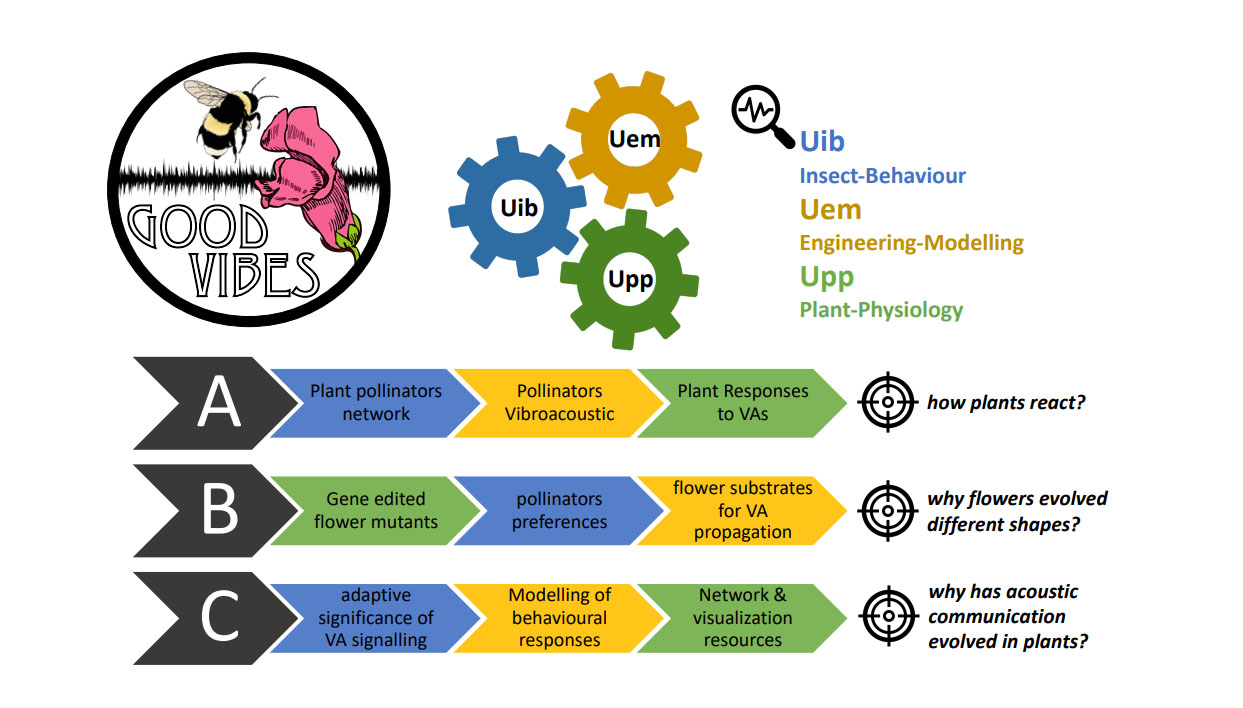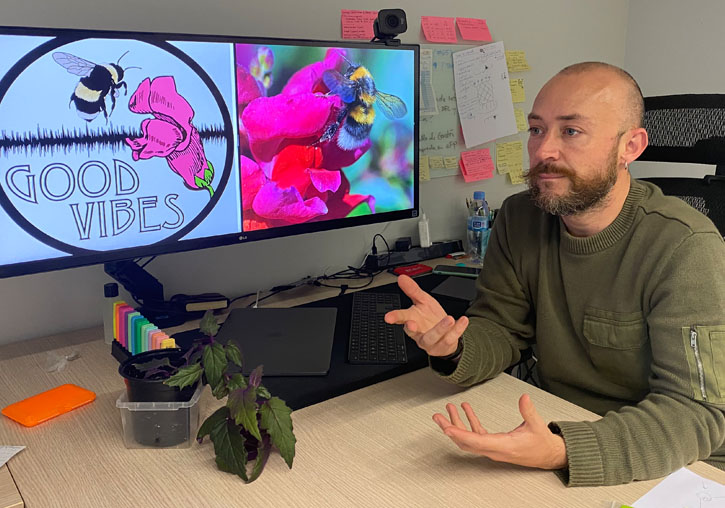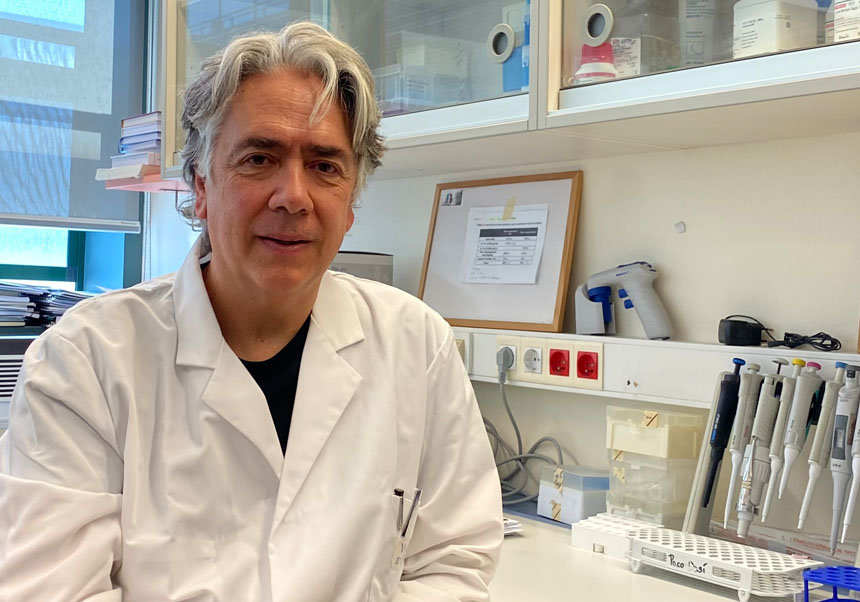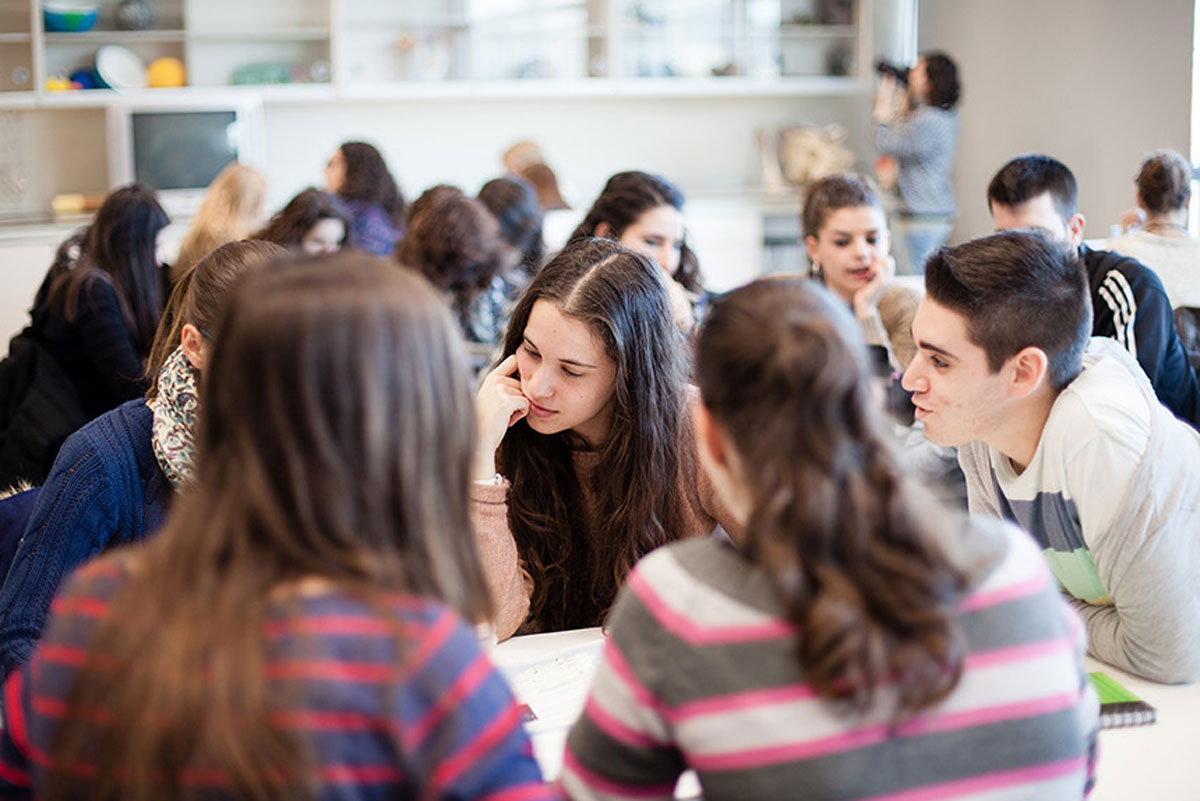Human Frontier science program supports research on plant-pollinator interactions of I2SysBio
- Scientific Culture and Innovation Unit
- March 23rd, 2022
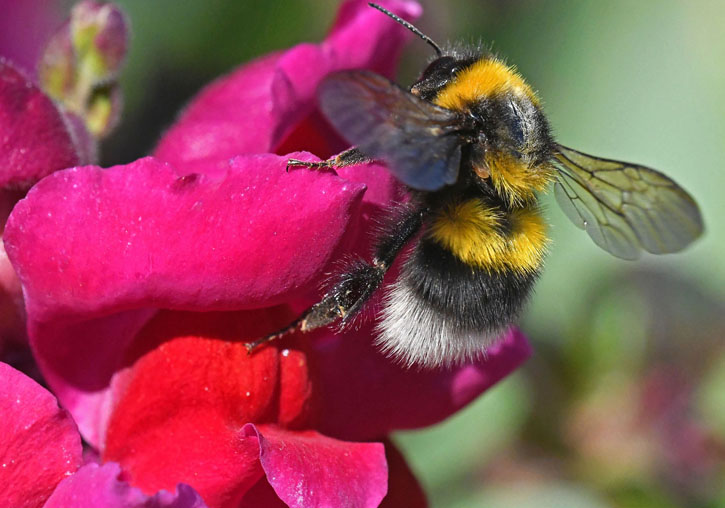
The Transcriptional Orquestration of Metabolism Lab at Institute for Integrative Systems Biology (I2SysBio, joint centre of the UV and the Spanish National Research Council-CSIC), led by J. Tomás Matus, forms part of the multidisciplinary project ‘Good Vibes’ that will be funded with a Human Frontiers Science Program Award, and which will focus on how plants interact with their pollinators.
‘Good Vibes’ aims at dissecting the molecular and physiological mechanisms of plant responses to distinct vibroacoustic signals (VAs) emitted by approaching insects, using Antirrhinum (snapdragon) as a model. Since Antirrhinum flower visitors have unequal efficiency as pollinators and emit characteristic VAs, it is supposed that plants are able to recognise effective pollinators by sensing their specific VA signatures. Scientists involved in this project also postulate that VA-elicited snapdragon responses affect pollinator behaviours, with effects on pollen transfer, and consequently in plant reproductive fitness.
‘Good Vibes’ will test these hypotheses by a multidisciplinary approach combining ethology, plant molecular biology and physics-informed science. Specifically, the project addresses the following fundamental questions: How do plants react to VAs emitted by flower-visiting insects? Have plants evolved different flower shapes and material properties to enhance VA signal propagation? Why has VA communication evolved in plants?
The project will involve three units: Insect-Behaviour Unit led by Francesca Barbero (University of Turin, Italy); Engineering-Modelling Unit led by Sebastian Oberst (University of Technology Sydney, Australia); and Plant-Physiology Unit led by J. Tomás Matus, a Ramon y Cajal Program researcher (University of Valencia) at I2SysBio.
The team will characterise the molecular and physiological mechanisms of plant responses to distinct VAs emitted by flower visitors, by assessing differences in plant sensitivity, perception thresholds and detection of frequency ranges or temporal components. Flower-shape and receptor-sensing/signal-transduction related genes will be edited by CRISPR-Cas and tested to analyse VA-sensing processes and structural features potentially evolved to enhance plant VA transmission. This project aims to go beyond the frontiers of knowledge by tackling complex dynamics in plant-pollinator systems from a totally new angle. According to Tomás Matus: «We endeavour to revolutionise our understanding of how plants interact with their environment through a finely tuned communication».
The International Human Frontier Science Program Organization (HFSPO) has announced some 37 million USD to support the top 4% of the HFSP research grant applicants over the coming 3 years. The 32 winning teams in the 2022 competition for research grants went through a rigorous year-long selection process in a global competition that started with 716 submitted letters of intent involving scientists with their laboratories in more than 50 different countries. This year, 7 Research Grants - Early Career and 25 Research Grants - Program were selected for funding. Each team member receives on average 110,000 USD - 125,000 USD per year.
More information: https://ir.uv.es/yl2jz2F
Annex: Tomás Matus.



